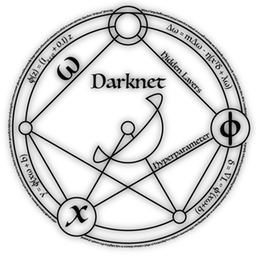#Darknet# Darknet is an open source neural network framework written in C and CUDA. It is fast, easy to install, and supports CPU and GPU computation.
For more information see the Darknet project website.
For questions or issues please use the Google Group.
We explored YOLO/DarkNet for identifying and localising malignant tumours from breast mammograms, using the original DDSM dataset. In this README, we will cover some tips + tricks that we picked up along the way!
There a number of really good tutorials on training DarkNet from scratch, including labelling data in the correct format and parametr tuning considersations. These tutorials are what we used to get started, and are listed below.
https://pjreddie.com/darknet/
https://timebutt.github.io/static/how-to-train-yolov2-to-detect-custom-objects/
This is well-explained by pjreddie in the README of the original repo. Find instructions at:
https://pjreddie.com/darknet/install/
We cloned and 'built' DarkNet, in July 2017.
NOTE: If using a GPU, remember to change the first line of the Makefile in the base directory to read: GPU=1
We used the raw unprocessed DDSM dataset. This is accessible on the GliaLab S3 bucket: 'fulldataset/imagesOnePlay/cancers/'
YOLO requires images and a text file with bounding box details associated with each image on a new line. The text file has the following format:
[category number] [object center in X] [object center in Y] [object width in X] [object width in Y]
The following scripts may be useful for you:
glia_scripts/rewritecsv.py - Reads file names and bounding box coordinates, converts them to YOLO format and writes them back to a file. Assumes the original files has the format:
image_name,tumor_location_x,tumor_location_y,tumor_radius,x_min,x_max,y_min,y_max
glia_scripts/transfer_files.py - Transfer jpeg files to a different folder
We must explicitly define train.txt and test.txt files with the names of train/test data. This is discussed in tutorials above. We used the following script after first converting data to YOLO bounding box format.
glia_scripts/data_split.py - Split data into train and test sets, and write to corresponding text files
See tutorials for in-depth explanation!
Training command:
darknet.exe detector train cfg/obj.data cfg/yolo-obj.cfg darknet19_448.conv.23
We attempted training at different scales. This is achieved by altering the width and height arguments in the .cfg file.
Once we have the trained model weights, we can predicting bounding boxes for our test setusing saved weights:
./darknet detector valid cfg/obj.data cfg/yolo-obj.cfg backup/run_1_cancers_only/yolo-obj_10000.weights
This outputs bounding box co-ordinates into a text file (named by default as 'comp4_det_test_cancer.txt' _but this can be changed) stored under 'results'. Remember to update the .data, .cfg and .weights files to your saved files!
Using this output, we can then evaluate the model using Intersection over Union (IOU). Good explanation here - http://www.pyimagesearch.com/2016/11/07/intersection-over-union-iou-for-object-detection/
A Jupyter notebook showing this calculation is also included.
We evaluated the results on a hold-out set by computing 'intersection over union' (IOU). IOU results for network trained with input images being re-sized to 416x416, but tested at different scales:
test image input size: 416,416
| mean| 0.049828 |
| std | 0.141468 |
| min | 0.000000 |
| max | 0.887157 |
test image input size: 1244,1244
| mean| 0.043643 |
| std | 0.153892 |
| min | 0.000000 |
| max | 0.999996 |
The weights for this model are also available within the glia_scripts/backups folder
Transferring files from EC2 instance to local machine (works in the opposite direction too, by switching source and target):
scp -i ec2key.pem username@ec2ip:/path/to/file ./target_dir/
GNU screen: (http://aperiodic.net/screen/quick_reference)
Use GNU screen to set up a screen session while training. This allows you to exit your SSH session but leave training to continue within the EC2 instance.
Google threads for YOLO/DarkNet: https://groups.google.com/forum/#!searchin/darknet/get$20bounding$20box%7Csort:relevance/darknet/au4B7aTSofE/jWktLKhmEQAJ
YOLO TensorFlow implementation: https://github.com/johnwlambert/YoloTensorFlow229
Belal C
Sailesh B
